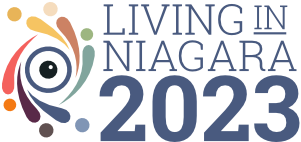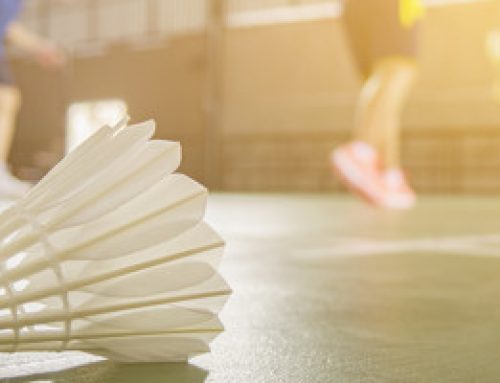Having access to recreation and sport facilities and participation opportunities enriches the lives of residents of all ages, and helps to attract visitors to Niagara. There are strong links between this Sector and many others, most notably Health and Wellness, Community Belonging and Economic Prosperity.
National Context:
Since 1994, Canadians’ overall participation in at least 15 minutes of physical activity such as walking, cycling, exercise, sports, gardening and dancing has risen steadily, from 21 to 28 times per month (an overall increase of 31.2%). Canadians under age 25 are the most physically active, and older people are increasingly embracing active lifestyles.
Source: Canadian Index of Wellbeing National Report, 2016
Rating
Recreation and Sports
How Niagara is doing in the Recreation and Sports Sector in 2017:
2 – We’re doing well and headed in the right direction
Amount of progress currently being made in the Recreation and Sports Sector in Niagara in 2017:
C – Some progress is being made
Happening Now
- 2016 statistics show that in Niagara we have a total of 404 kilometres of trails; 167,559 square metres of outdoor recreation facility space; and 910,406 square metres of indoor recreation facilities.
- Niagara is increasingly attracting large national and international sporting events, including the 2015 Junior and Senior Canadian Wrestling Championships at Brock; rowing and canoe/kayak sprint events for the 2015 Pan Am Games; the 2015 World Dragon Boat Racing Championships; the 2016 International Ice Hockey Federation U18 Women’s World Championship; 2017 Scotties Tournament of Hearts Canadian Women’s Curling Championship; and the annual Royal Canadian Henley Regatta.
- Niagara is one of 45 Ontario communities participating in the Healthy Kids Community Challenge, engaging diverse partners to implement activities to reduce and prevent childhood overweight and obesity. In Niagara, the Challenge is supported by a $1.125 million investment from the Ontario Ministry of Health and Long-Term Care.
- The Niagara River Lions, the 9th expansion team of the National Basketball League of Canada, launched its inaugural season in December, 2015 at the Meridian Centre.
- A number of new sport facilities are being constructed across Niagara, including a 2-pad arena in Pelham, a new skate park, arena and wellness centre in West Lincoln, and upgrades to the Thorold Community Arenas.
What’s Emerging
- More than 50% of Canadians are involved in community-level sport as participants, spectators, volunteers, coaches or officials. A 2015 Community Foundations of Canada community belonging report produced in partnership with True Sport Foundation shows that 85% of Canadians agree that participation in sport builds stronger communities; benefits individuals who participate; brings people together; builds social capital; and fosters inclusion of excluded groups.
- Health, economic and environmental benefits of Active Transportation (AT) are being recognized across Niagara. There are AT citizen advisory groups in 11 local municipalities; the Niagara Cycling Tourism Centre is working with local business areas to strengthen support for cycling infrastructure; Brock University students are advocating for safe routes to walk or cycle to campus; and the 2016 Cycling Tourism Report shows approximately 98,000 cyclists visit Niagara annually, spending $229 per visit.
- The 2021 Canada Summer Games, the country’s largest multi-sport event, will be hosted in Niagara, bringing anticipated legacy sport equipment, facilities and upgrades to existing facilities. The Games are projected to bring $2 million in economic stimulation; 1,500 jobs ($76 million in salaries and wages); 30,000 visitors; 5,000 athletes; and 1,500 media representatives to Niagara.
- Data about recreation and sport facilities in Niagara is being openly shared. Rel8ed.to, a Niagara-based data analytics company, provides an open data set of 458 Sports Clubs and Facilities in the Niagara region, which includes 180 indoor and 278 outdoor facilities. Of these, the top 5 categories by facility type are golf (150); ice hockey (58); martial arts (49); soccer (39); and baseball (36). The niagaraopendata.ca portal hosted by Niagara Region includes 15 data sets describing golf courses, public trails, parks, campgrounds, public beaches, arenas, marinas and bike routes in the region.
Suggested Action Steps
- Encourage the Data and Knowledge Niagara Reference Group and Niagara Connects to work with Canada Summer Games 2021 organizers to identify opportunities to gather, share and learn from event-related data. This will help to measure the Games’ impact, and support planning for the future.
- Build our understanding of the time and expertise people invest in volunteering to support sport activity; the importance of volunteering to the recreation and sports ecosystem in Niagara; and how volunteering in recreation and sports relates to the broader landscape of volunteer activity in the region.
- Pay attention to national data showing that women are far less likely to participate in sport than men, and mothers’ participation in sport has a positive effect on children’s participation rate. Relate this to Niagara efforts to promote healthy, active lifestyles to reduce and prevent childhood overweight and obesity.
- Support making sport programs accessible for families living on low income. National data shows that Canadian families spend on average $953 annually for one child to play in organized sport.
- Focus on fun, fair play, and inclusive values to encourage people of all ages to enjoy the benefits, competencies and sense of belonging that come from participating in recreation and sport activities.








